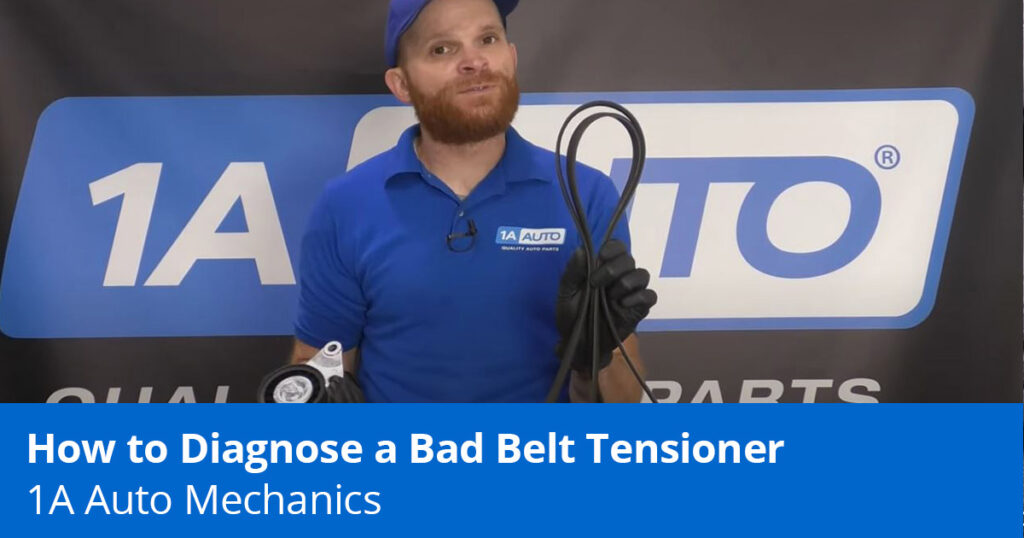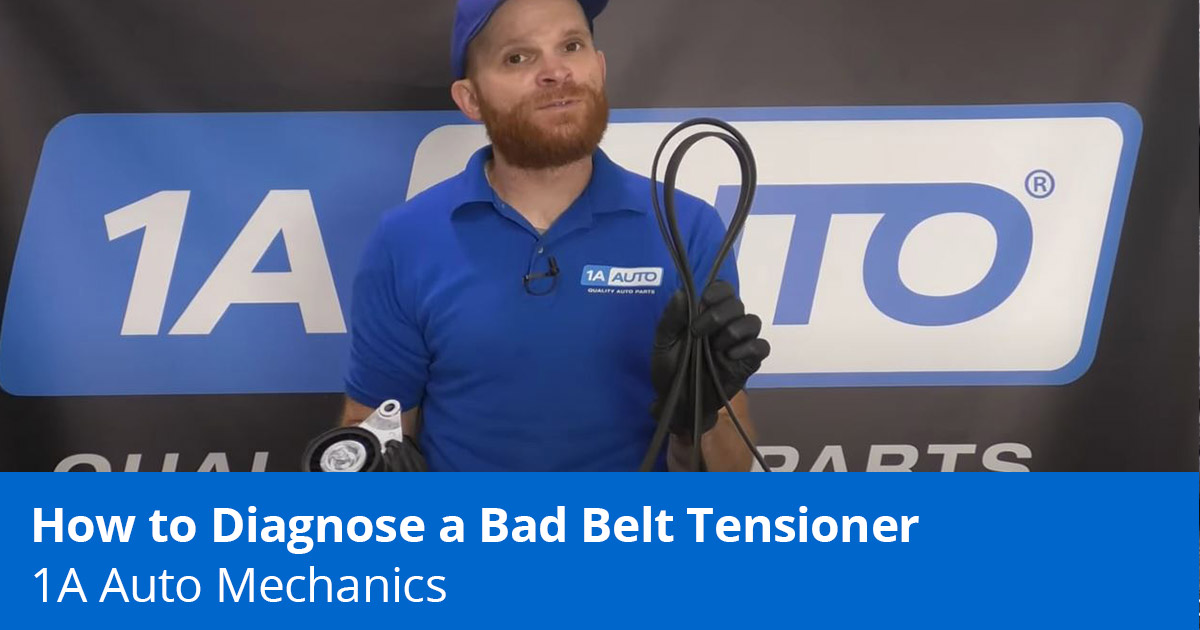
If you hear your car chirping or squealing, it could be from a worn belt or belt tensioner. Find out what belt tensioners are, what they do, and how to tell if yours is bad and is causing a chirping noise from the engine with these tips.
How to Diagnose and Fix a Bad Serpentine Belt Tensioner
What Is a Belt Tensioner?

The belt tensioner applies a regulated amount of pressure to allow the pulleys to spin as they need, like the alternator pulley, idler pulley, and power steering pulley. When the tensioner applies too little or too much pressure, it can damage other parts like the serpentine belt or the pulleys, and usually means the tensioner itself is broken.
There are three types of belt tensioners
- Spring-loaded belt tensioner
- Hydraulic belt tensioner
- Manually adjustable belt tensioner (usually has an adjustable bolt)
Vehicles usually have one type of tensioner and it will be located in different areas on the vehicle depending on how the engine is positioned.
Signs and Symptoms of a Bad Belt Tensioner
1. Squealing or Chirping Noise from the Car
If the tensioner is holding too much tension, you may hear noise from a pulley’s bearing in a different location like the alternator or the power steering pump at 3:31 in the video above.
If the tensioner is holding too little tension, you might hear a squealing noise.
Defective Self-Adjusting Tensioner
A failing self-adjusting tensioner will give a chirp or squeal similar to the one in the video above at 3:00, especially if it’s wet outside. If the serpentine belt is in good condition, it’s the tensioner that needs replacing.
2. Alternator Not Charging
Another sign of a tensioner holding too little tensioner is the alternator not be charging properly
3. Wobbling or Unstable Belt
With the engine running, you may see the belt wobbling and shaking in real time. This means the tensioner is holding too little tension on the belt.

How to Test a Spring-Loaded Belt Tensioner for Wear
You may have to remove some parts like the air intake to access the belts like the serpentine belt. Also, some vehicles have multiple belts, and unless it’s a stretch belt assembly, each belt will have its own tensioner.
Steps for Testing a Spring-Loaded Belt Tensioner for Wear
- Pull on the Belt and Locate the Spring-Loaded Tensioner
With the engine off, pull the belt outward and away from its static position. The belt should pull out a little. Look for which one of the pulleys moves with the belt. That is a spring-loaded tensioner. Some tensioners are different, like an adjustable one, that will not move when the belt is tugged.

- Feel the Belt for Resistance
If the spring-loaded tensioner does not move after the belt has been tugged, it is probably frozen or stuck.
- Feel the Belt for Reflex
If the tensioner doesn’t fully retract and put the proper amount of tension on the belt, it could also be defective.
How to Replace a Belt Tensioner
If the belt tensioner is not putting enough tension on or is putting too much tension on the belt, we recommend replacing it as soon as possible.
We also recommend inspecting the serpentine belt. A defective tensioner has likely worn out the serpentine belt, and if it has shown signs of wear, we recommend replacing the tensioner and the serpentine belt at the same time.
Signs of a Worn Serpentine Belt
A worn serpentine belt will have cracked or deeply worn grooves.
How to Replace a Defective Serpentine Belt and Tensioner
Learn how to replace a defective or worn serpentine belt and tensioner yourself with thousands of how-to videos for many makes and models in 1A Auto’s video library.
Shop Parts at 1aauto.com
Related Content
- Screeching Noise When Starting Car? Diagnose & Fix
- Car Diagnosis By Sound: Certain Sounds and What They Could Mean
- Timing Belts Vs. Timing Chains

